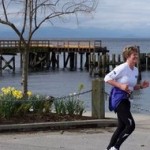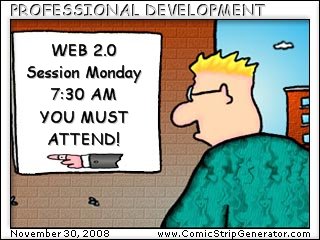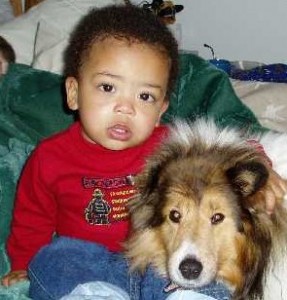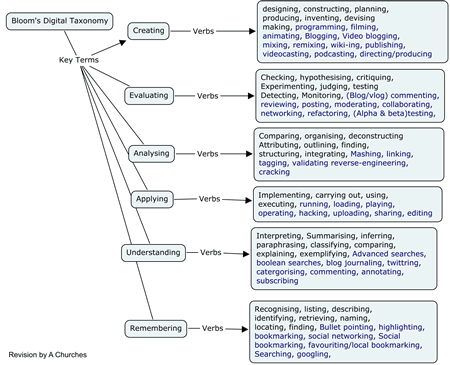Are We There Yet?
It is good to have an end to journey toward; but it is the journey that matters, in the end. — Ursula K. LeGuin
So I’m almost finished the course, and it has been the most difficult course I’ve ever done. It’s also been the most exciting and immediately useful course I’ve done since I became a teacher librarian. I must hasten to add that the other TL-DL courses have also been excellent, but with those I had considerable experience in the field to help.
To get through the hardest journey we need take only one step at a time, but we must keep on stepping — Chinese Proverb
I laugh when I remember Jennifer Branch telling me that I should expect to spend 10-12 hours per week on the course. There were many weeks I spent three to four times that long. Thank goodness I was not still teaching, because there is no way I could have kept up. I’m looking forward to next week, when I can really start my retirement! No deadlines! Hurray!
We don’t receive wisdom; we must discover it for ourselves after a journey that no one can take for us or spare us. — Marcel Proust
Too Close to Crashing
The main challenge of my journey through Web 2.0 was that EVERY WEEK I had to explore a new application, figure out how to use it myself, create a product with it, read how others were using it or evaluating its usefulness, and decide how it could be used by teachers and students in school. Then of course every second week I had, in my mind, yet another “paper” to do in terms of the discussion topic. The workload was quite horrendously intimidating, and at one point I thought I wouldn’t make it.
In the middle of the journey of our life I came to myself within a dark wood where the straight way was lost. — Dante Alighieri
That dark point for me was the last week of September. I worked so hard on the video-sharing blog post (Stumbling Through Video Sharing, or The Week I Almost Lost My Mind) and did very poorly in terms of the mark. I almost quit the course, but Joanne did reassure me that I did in fact know what I was doing. As a side note, while it is fun to look at, I must admit that I STILL don’t altogether see the usefulness of YouTube in the classroom, especially since it is blocked in so may schools. I believe that TeacherTube is more educationally useful.
After this near meltdown I decided that I needed to limit the reading I did and focus more on choosing a few good articles or posts to share. Fortunately my new strategy of being severely selective in my reading worked, and this helped make the workload more manageable. I decided the next week after writing about RSS feeds that I could in fact do this Web 2.0 thing!
Earning Those Bonus Air Miles
The real plus of this journey through Web 2.0 was that EVERY WEEK I had to explore a new application, figure out how to use it myself, create a product with it, read how others were using it or evaluating its usefulness, and decide how it could be used by teachers and students in school. Then of course every second week I had yet another opportunity to explore Web 2.0 in terms of the discussion topic.
Wow! What an opportunity! I got to create a blog, and work on blogging over a whole term. I created a podcast, built a VoiceThread, crafted a wiki, uploaded photos to Flickr, learned how to embed videos and widgets, really mastered social bookmarking with Diigo, and much more. I got to read the writings of some of the leading lights in education and teacher librarianship. And, best of all, I had great company on the journey.
Fellow Travellers
Good company in a journey makes the way seem shorter. — Izaak Walton
I have been fortunate indeed to be part of a wonderful class of gifted and dedicated educators. While I can’t possibly list all I’ve learned from them, I would like to mention each, in no particular order, ending with Joanne.
 Joanie, what I have just realized is that your blog isn’t just about learning Web 2.0; it’s about how you live your life. I truly admire what you’ve achieved here. I loved your entry The Thrill of Victory. I enjoyed reading your blog each week with your strong voice, running quotes and analogies, and your passion for the craft of teaching. And thank you for reminding me to keep on top of my email!
Joanie, what I have just realized is that your blog isn’t just about learning Web 2.0; it’s about how you live your life. I truly admire what you’ve achieved here. I loved your entry The Thrill of Victory. I enjoyed reading your blog each week with your strong voice, running quotes and analogies, and your passion for the craft of teaching. And thank you for reminding me to keep on top of my email!
 Christine, I love your voice, your humour, and your enthusiasm. Your post What’s Next? Wikis for all of course! post makes me want to run right over to school and start making my teachers use wikis! Seriously, as always, Christine, you offer wonderful resources. Reading your blog is like getting great PD painlessly. Many thanks for your great ideas about time management too!
Christine, I love your voice, your humour, and your enthusiasm. Your post What’s Next? Wikis for all of course! post makes me want to run right over to school and start making my teachers use wikis! Seriously, as always, Christine, you offer wonderful resources. Reading your blog is like getting great PD painlessly. Many thanks for your great ideas about time management too!
 Jill, I appreciate your philosophy of teaching and practice. You challenge me to think deeper, as in your post Sustaining Change in Technology Practices in School Your comments about sharing “the ownership of learning and change with all stakeholders – support staff, parents and students” resonates with me.
Jill, I appreciate your philosophy of teaching and practice. You challenge me to think deeper, as in your post Sustaining Change in Technology Practices in School Your comments about sharing “the ownership of learning and change with all stakeholders – support staff, parents and students” resonates with me.
 Rhonda, your blog is always practical and your comments supportive. You’ve given me many new resources to follow, including the Awakening Possibilties wiki and Anne Davies’ blog – EduBlog Insights. You are a podcaster extraordinaire as you show in Which Web 2.0 Tool? Thanks to you I’m going to try again to make Twitter work.
Rhonda, your blog is always practical and your comments supportive. You’ve given me many new resources to follow, including the Awakening Possibilties wiki and Anne Davies’ blog – EduBlog Insights. You are a podcaster extraordinaire as you show in Which Web 2.0 Tool? Thanks to you I’m going to try again to make Twitter work.
Jes, I am so impressed by how you are using VoiceThread with your students and encouraging your colleagues to use it too. Thanks also for the great resources you’ve introduced to me, including the Langwitches blog. I wish you all success with your exciting First Nations project,
 Kathleen, I appreciate the introduction to the chapter by Hughes-Hassell and Harada, Violet H. (2007): Change agentry: an essential role for library media specialists,” in School Reform and the school library media specialist. Your post blog-no11 What’s next? On the horizon of the web 20 landscape gave me much food for thought about wikis and the school library.
Kathleen, I appreciate the introduction to the chapter by Hughes-Hassell and Harada, Violet H. (2007): Change agentry: an essential role for library media specialists,” in School Reform and the school library media specialist. Your post blog-no11 What’s next? On the horizon of the web 20 landscape gave me much food for thought about wikis and the school library.
 Selena – Your blog too gave me so many good ideas and resources. It’s Time to Walk the Talk remined me of Will Richardson’s blog, A Web of Connections…Why the Read Write Web Changes Everything, and introduced me to 25 Tools every Learning Professional should have in their Toolbox – and all for FREE!. I would love to hear more about the class wiki you are going to do next semester for your Social Studies 11 students, “who can get bogged down with all of the vocabulary they have to learn in order to be able to write their provincial exam (in French no less).”
Selena – Your blog too gave me so many good ideas and resources. It’s Time to Walk the Talk remined me of Will Richardson’s blog, A Web of Connections…Why the Read Write Web Changes Everything, and introduced me to 25 Tools every Learning Professional should have in their Toolbox – and all for FREE!. I would love to hear more about the class wiki you are going to do next semester for your Social Studies 11 students, “who can get bogged down with all of the vocabulary they have to learn in order to be able to write their provincial exam (in French no less).”
 April, Your post What’s Next? Provides all the links and suggestions for tools one would need to start blogging with students – including analysis of an actual online assignment. Now I want to check out http://moodle.org/.
April, Your post What’s Next? Provides all the links and suggestions for tools one would need to start blogging with students – including analysis of an actual online assignment. Now I want to check out http://moodle.org/.
 Heather, your post The ABC’s of Blogging in Education is one I want to share with my teachers. It is clever and intelligent and relevant. I also really appreciate the link to 50 Useful Blogging Tools for Teachers!
Heather, your post The ABC’s of Blogging in Education is one I want to share with my teachers. It is clever and intelligent and relevant. I also really appreciate the link to 50 Useful Blogging Tools for Teachers!
 Darryl, yours is another blog I will return to for professional development. Your post In the wiki wiki wiki wiki wiki room…. with its links to your Literature Circles with the wiki and the The Learning Library Wiki is excellent, and I want to share Part II – Drum Roll Please…… with my staff when we look at blogging.
Darryl, yours is another blog I will return to for professional development. Your post In the wiki wiki wiki wiki wiki room…. with its links to your Literature Circles with the wiki and the The Learning Library Wiki is excellent, and I want to share Part II – Drum Roll Please…… with my staff when we look at blogging.
 Joanne, thank you for all your work in setting up and running this course. You gave us challenging assignments supported by those excellent Trailfires. Thanks also for using Will Richardson’s inspirational book, Blogs, Wikis, Podcasts and Other Powerful Web Tools for the Classroom. I also appreciate your support and understanding when I really needed it.
Joanne, thank you for all your work in setting up and running this course. You gave us challenging assignments supported by those excellent Trailfires. Thanks also for using Will Richardson’s inspirational book, Blogs, Wikis, Podcasts and Other Powerful Web Tools for the Classroom. I also appreciate your support and understanding when I really needed it.
Thanks to you all for your kindness and generosity as we shared this journey. I look forward to revisiting your blogs as they are wonderful professional learning tools for me.
Life is short and we have never too much time for gladdening the hearts of those who are travelling the dark journey with us. Oh be swift to love, make haste to be kind. — Henri Frederic Amiel
Where to next?
All journeys have secret destinations of which the traveler is unaware. — Martin Buber
What have I learned? I believe I really do understand about Richardson’s Read/Reflect/Write/Participate/Web. I’ve learned that there are more experts out there in Web 2.0 than one person could ever find in a lifetime. Thank goodness I’ve also learned that it is not all up to me to find them – I’m developing a professional/personal learning network to help me.
I’ve learned that I CAN’T WAIT to get back into a school and start working with educators on Web 2.0 applications.
My next university course will be EDES 545, but unfortunately not next semester. What I am planning to do is continue exploring Web 2.0, and continue blogging about that journey. There are plenty of applications I haven’t tried (or mastered!) yet.
And, to answer my question — no, I’m not there yet!
Focus on the journey, not the destination. Joy is found not in finishing an activity but in doing it. — Greg Anderson








